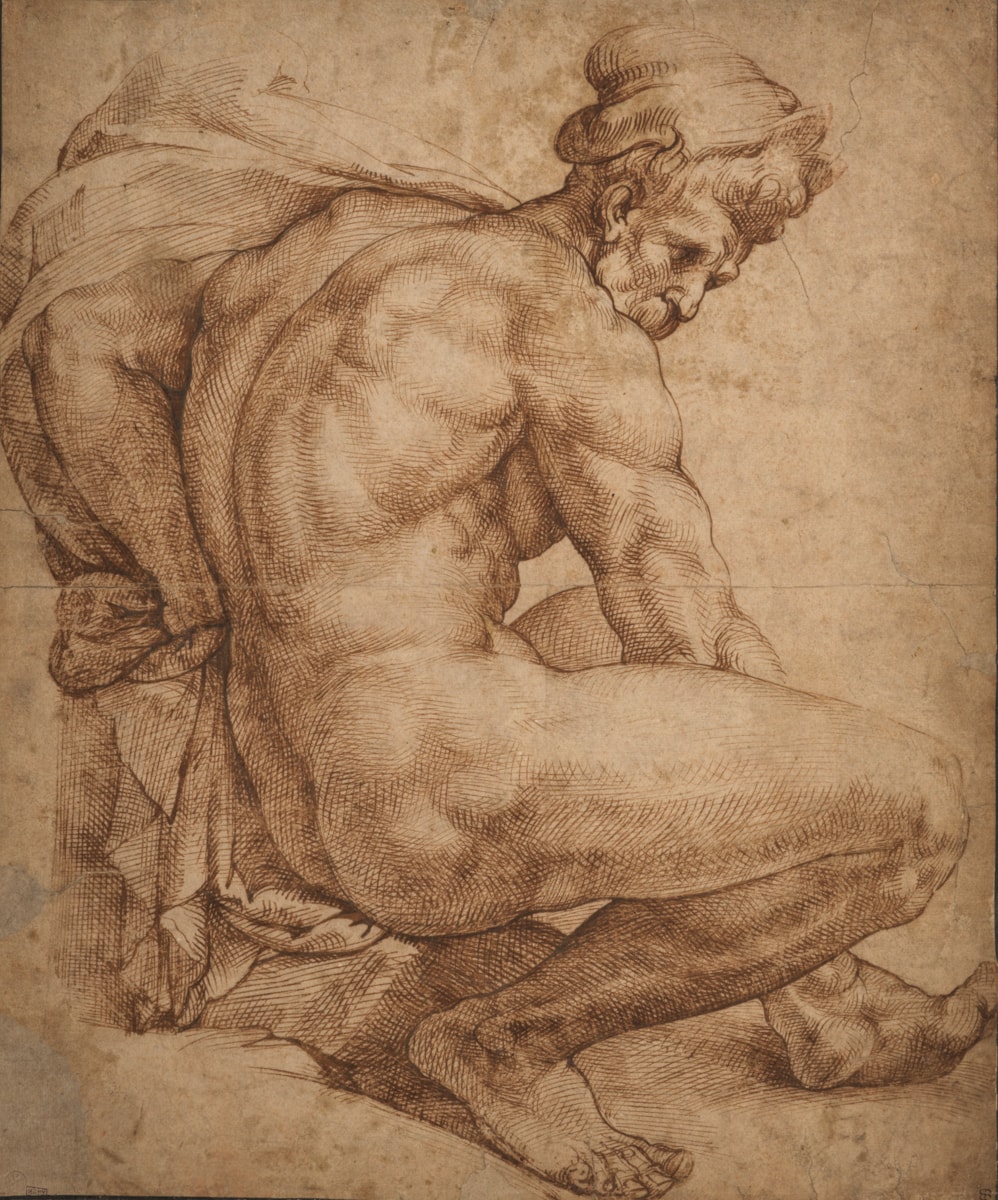
Bartolomeo Passarotti (Bologna 1529 - Bologna 1592)
A seated nude
Description:
inscribed (lower right): BB; inscribed on mount: 740.; Baccio Bandinelli 1487 – 1550
pen and brown ink
445 x 371 mm (made up)
Provenance:
Count Moritz von Fries (1777-1826), Vienna [L. 2903]
Probably Marquis de Lagoy (1764-1829), Aix-en-Provence [L. 1710]
Unidentified collector’s mark (upper left), possibly Dr John Anthony Cramer (1793-1848), Oxford [L.92]
Mortimer Brandt, New York (1905-1993) [his mark lower left MBNY, not in Lugt]
Christie’s, London: 9 December 1980 [Lot 33]
with Baskett & Day Ltd, London
acquired from the above by the present owner, December 1980
Literature
M. Faietti and D. Cordellier, Un Siècle de Dessin à Bologne, 1480-1580: de la Renaissance a la Réforme Tridentine, exhib. cat., Paris 2001, p. 192
M. Faietti and D. Cordellier, Il Cinquecento a Bologna. Disegni dal Louvre de Dipinti a Confronto, exhib. cat., Milan 2002, p. 344
C. Höper, Bartolomeo Passarotti (1529-1592), 2 vols., Worms 1987, I, p. 95, 116
C. Höper, Bartolomeo Passarotti (1529-1592), 2 vols., Worms 1987, II, p. 151, no. Z170
R. Serra, Musée du Louvre, Département des Arts graphiques Inventaire Général des Dessins Italiens, Tome XII, Dessins Bolonais du XVIe Siècle, exhib. cat., Paris and Milan 2022, pp. 246-247
Note:
This powerful drawing by Bartolomeo Passarotti was undoubtedly intended as an autonomous work of art, a virtuoso example of disegno finito. The figure is inspired by the statue of the river-god Euphrates which forms part of the base of the Oceanus fountain in the Boboli Gardens, Florence. The sculptural group, comprising of four figures, was executed by Giambologna between 1572 and 1576. Oceanus, father of the river-gods, stands above his three supporting children: Nile, representing old age; Euphrates, representing middle age; and Ganges, representing youth. An autograph reduced-scale terracotta of the river-god Euphrates is now held the Rhode Island School of Design (inv. 44.674) and it is likely that Passarotti drew his inspiration for the present drawing from this terracotta or from another small-scale version of the larger statue.
The present sheet is one of three drawings by Passarotti inspired by the fountain group. These drawings of large, isolated figures are formed with Passarotti’s typically assured combination of pen and ink cross-hatching with strongly defined sculptural definition. The second of the drawings is in the Musée du Louvre, Paris (Höper 1987, Z 285). The drawing has near identical dimensions to the present sheet (445 x 371 mm; 442 x 381 mm) and it depicts the same figure, although from a frontal viewpoint. In the Louvre drawing, Passarotti has transformed Euphrates from a river-god into the Olympian Jupiter. The third drawing, the smallest in scale, is in the British Museum, London (Höper 1987, Z 133). In this drawing the figure’s pose is loosely derived from Giambologna's Ganges, and the river-god has been transformed into a Saint Jerome. In the present drawing, the thick curled hair of Giambologna’s river-god has been replaced with a Phrygian-style cap, an attribute that is seen in a number of Passarotti’s drawings of the mid-1570s. In Homère et l'énigme des pêcheurs, three such hats are seen, and the frontal pose of Euphrates served as a model for one of the central figures in the composition (Höper 1987, Z 288). Here, elaborate drapery, theatrically suspended over the figure’s left shoulder is added to the figure. The figure itself is firmly rooted on solid ground, losing the ewer between its legs and all fluvial associations.
SOLD
